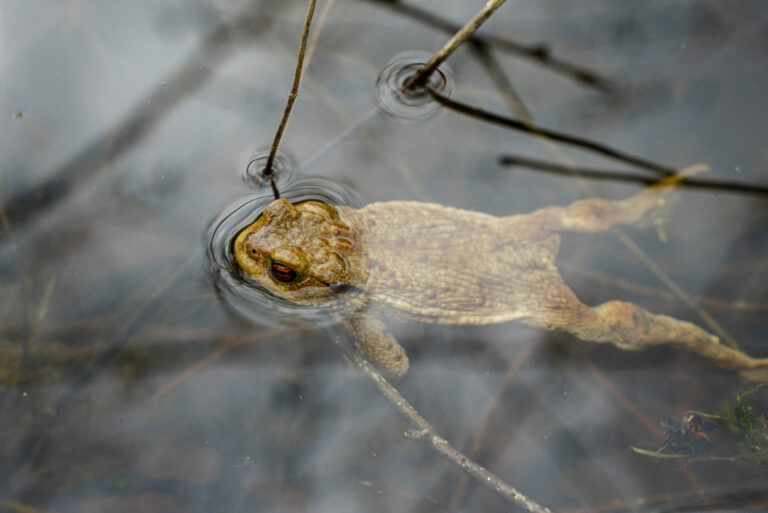Bufo bufo

The upper side of the common toad is brown in color, while the underside is light and partially marked with spots (Schaefer 2018). The skin is wart-covered. Adult females of Bufo bufo are larger, reaching a length of up to 11 cm, compared to males that can reach a body length of up to 9 cm. The common toad is found throughout Europe, with a distribution focus in Central Europe, where it is almost ubiquitous. Its habitats include moist deciduous and mixed forests as well as gardens. The breeding season begins in spring between March and April. Larger standing bodies of water such as ponds or pools with abundant underwater vegetation are used as spawning grounds. Predators of the common toad include various bird of prey species, grass snakes, and mammals such as the polecat or raccoon. Other threats include road mortality and habitat destruction (Glandt 2018).
Diet: Bufo bufo feeds on spiders, insects, snails, and earthworms (Glandt 2018).
Conservation status: The common toad is listed as “Least Concern” in the IUCN Red List of Threatened Species. In Germany, it is “specially protected” according to the Federal Nature Conservation Act and the Federal Species Protection Ordinance.
-
Glandt, D (2018)Praxisleitfaden Amphibien- und Reptilienschutz. Schnell – präzise – hilfreich. Berlin, Heidelberg: Springer Berlin Heidelberg.
-
Schaefer, M (2018)Brohmer – Fauna von Deutschland. Ein Bestimmungsbuch unserer heimischen Tierwelt: Quelle & Meyer Verlag GmbH & Co